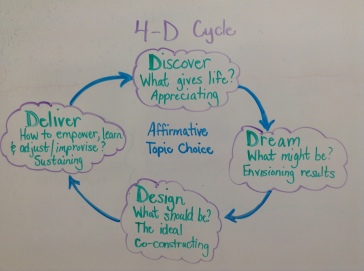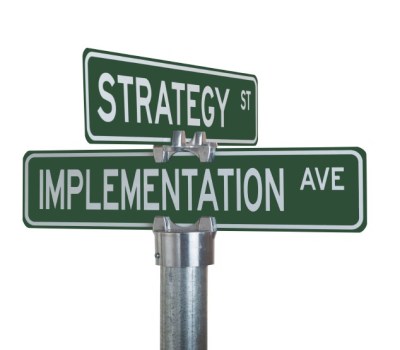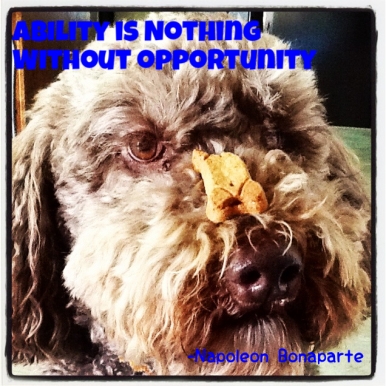Category Archives: Developing and Facilitating Leadership
Strength-based Coaching: Why Ask: “What areas can be improved?”
During the past 5 weeks I have been involved in an online connected coaching course via plpnetwork. At this point, this course has given me great learning to reflect upon and to connect with past experience.
Connected Coaching is a combination of strengths from three coaching models:
1. The 5 States of Mind with self reflection and self-efficacy from Cognitive Coaching by Costa & Garmston
2. Collaborative communities of inquiry from Instructional Coaching by Knight
3. Appreciative Inquiry approach focusing on strengths instead of weaknesses from Evocative Coaching by Tschannen-Moran & Tschannen-Moran.
What has surprised me the most is how the Appreciative Inquiry approach can promote growth solely reflecting from a strength-based perspective. Since I learned about AI, I am excited about focusing on people’s strengths and, at the same time, feeling confident that it will help them grow personally & professionally in a positive frame of mind. When I think about teachers reflecting on their classroom walk-through data and in PLCs, I don’t ever want them to feel like they are not doing anything right. There are always many things that they are doing well and I want them to build upon those strengths and be empowered by it. In the past, I viewed coaching as helping people with their weaknesses, not their strengths. The AI approach has given me a different perspective. We do not have to focus on areas of improvement when focusing on strengths can move us forward more effectively.
Connected coaching has also helped me to realize the importance of stories. Trust & rapport emerge from educators telling their stories from a positive framework. Confidence & empowerment also start to shine as educators reflect on their practice and effectively move forward. If a negative mindset gets us off track, then the power of stories about what has gone well can bring us back to a positive frame of mind to work within.
Evocative Coaching also describes the importance of brainstorming. The idea of the Wondering Playground from Dana, N. F., & Yendol-Hoppey, D. in their book: The Reflective Educator’s Guide to Professional Development: Coaching Inquiry- Oriented Learning Communities also appeals to me because it connects with what I currently believe– play is important. This framework gives PLCs a structure for “play”. I think this will also empower teachers to pursue what may be a burning question for them that emerges from their practice.
I’m looking forward to the last few weeks of this course as I hone my skills and learn more from my colleagues.
Makes Me Think…
Photo by Life Inspired Photography
I recently finished the book Outliers by Malcom Gladwell. In this book he argues how opportunity and time on task result in success and that it’s not always the “best and the brightest”. He gives a wide variety of examples from birth dates to lucky breaks. Here are some of my thoughts in relation to students, staff and instructional leadership for the 21st century:
1. Gladwell suggests that if your birthday is within 3 months after any sports cut off date, you have a very high chance at getting to “the show” in that sport. He gave hockey as an example.
This makes me think about our students who have “late” birthdays. We often forget what a difference a few months can make developmentally. When we think about infants, a few weeks can be the difference between walking and not walking yet. We cannot forget this as they get older. Kids need to know that they might not be ready for some concepts and we cannot let them think that they will never “get it”. One size does not fit all.
2. Gladwell reveals that studies show how low-income kids start school academically similar to middle – high income kids. However, the academic gap increases by the time they are in grade 5 due to fewer opportunities during the summer months.
This makes me think how important it is to continue to support students all year. What can we do to increase awareness and support for these kids?
3. Gladwell discusses how 10,000 hours of practice is needed to master a skill. It does not depend on natural talent.
This makes me think: Are we giving our students enough time to practice skills. For example, we expect our students to be proficient readers but do we give them enough time to practice reading silently or to someone during the school day? Are we instructing 80% of the time and only giving students 20% of the time to practice when it should be 20% instruction and 80% practice? What about math? It takes time and practice to solve problems. Are we assuming the best students are the ones who can solve problems quickly? Are we giving others opportunities to solve even if they take longer or prefer different ways to show what they know ?
This also makes me think about the time we give our teachers to master new skills as well. As leaders, have we created built-in time for teachers to collaborate and master teaching in a 21st century environment?
4. Gladwell states that opportunities are a huge factor in success. Bill Gates would not be where he is today if he did not have the opportunity to have unlimited access to a time-sharing terminal to master computer programming when he was 13 years old.
This makes me think: Are we giving our students opportunities to learn how they want to learn and with the tools that they prefer? As leaders, have we given opportunities to our staff to master technology integration in the classroom? Have we created even the smallest opportunities to have procedures such as signing up for a whole school activity using a collaborative web tool instead of circulating a sign up paper at the staff meeting or having 25 copies of the sign up sheet going around via emails? As leaders, have we neglected opportunities that have been given to us to improve our 21st century skills or have we pushed them aside due to time, fear, beliefs, hoping it will go away,…etc.?
If success = opportunities and time, what opportunities can we continue to create for staff and students? Check out our school’s journey.




